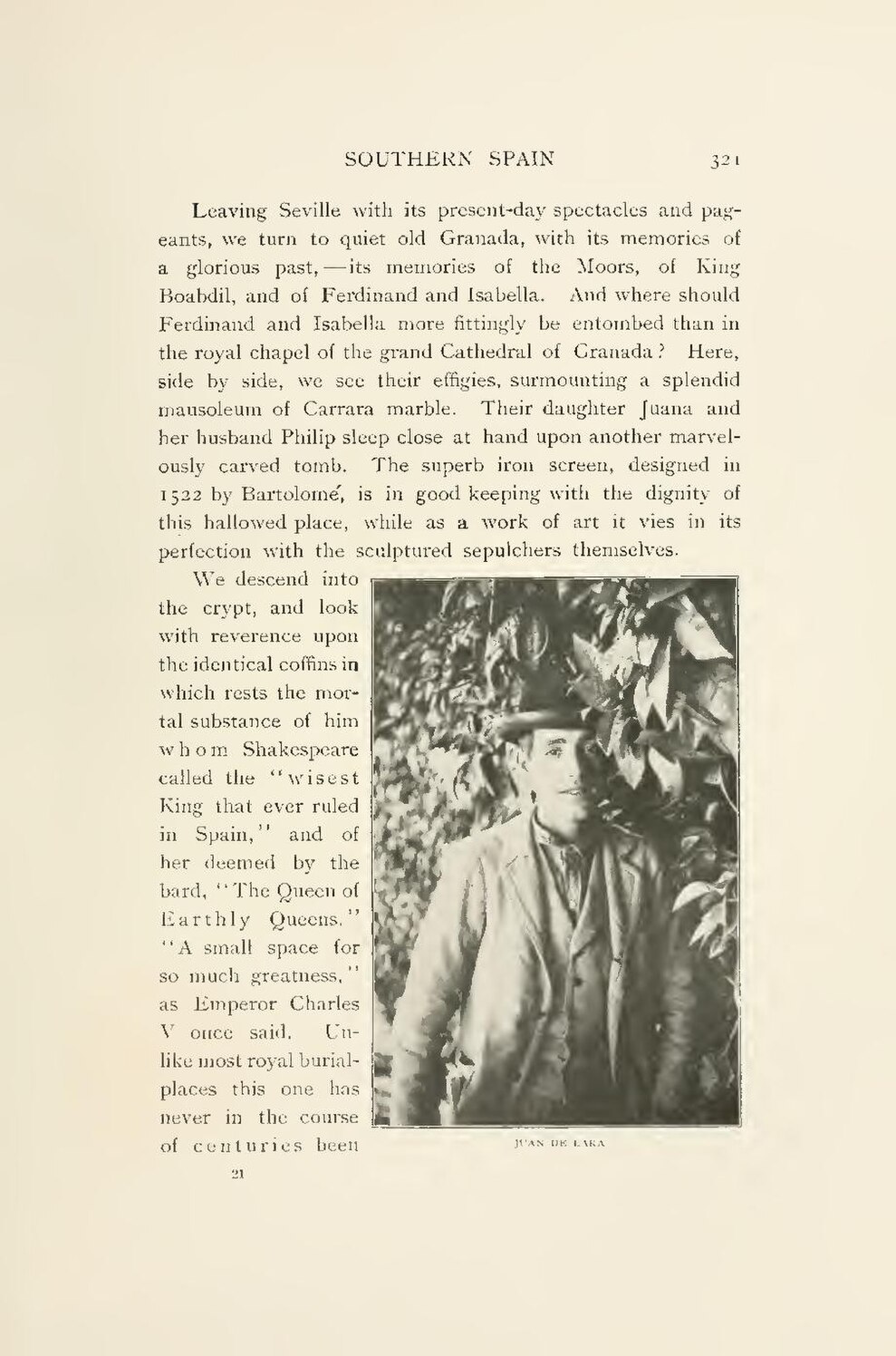Leaving Seville with its present-day spectacles and pageants, we turn to quiet old Granada, with its memories of a glorious past,—its memories of the Moors, of King Boabdil, and of Ferdinand and Isabella. And where should Ferdinand and Isabella more fittingly be entombed than in the royal chapel of the grand Cathedral of Granada? Here, side by side, we see their effigies, surmounting a splendid mausoleum of Carrara marble. Their daughter Juana and her husband Philip sleep close at hand upon another marvelously carved tomb. The superb iron screen, designed in 1522 by Bartolomé, is in good keeping with the dignity of this hallowed place, while as a work of art it vies in its perfection with the sculptured sepulchers themselves.
An image should appear at this position in the text. To use the entire page scan as a placeholder, edit this page and replace "{{missing image}}" with "{{raw image|The Burton Holmes lectures; (IA burtonholmeslect04holm).pdf/341}}". Otherwise, if you are able to provide the image then please do so. For guidance, see Wikisource:Image guidelines and Help:Adding images. |
JUAN DE LARA
We descend into the crypt, and look with reverence upon the identical coffins in which rests the mortal substance of him whom Shakespeare called the "wisest King that ever ruled in Spain," and of her deemed by the bard, "The Queen of Earthly Queens." "A small space for so much greatness," as Emperor Charles V once said. Unlike most royal burial-places this one has never in the course of centuries been
